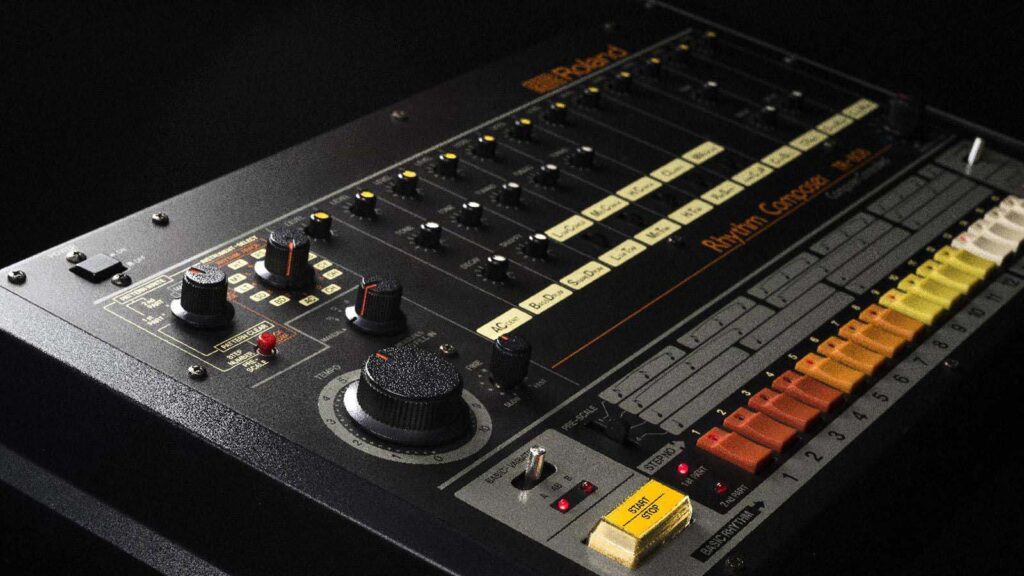In the music world, as in all other fields, there are certain events, people, and objects, such as the phonograph, the headphones, or the Fender Stratocaster, that mark a before and after in music history and change the course of history.
One of these objects was the Roland TR-808, a groove box/drum computer that allowed a single musician to become an entire, layering and combining different layers of sound to create complex songs without much equipment and without relying on the help of others.
Roland TR-808
The 808 was an integral part of the hip-hop culture and revolution in the 1980s, but was also used by musicians from all genres, including R&B, rock and pop, who used the iconic device to bring some of their biggest hits to life.

By loading the video, you accept YouTube's privacy policy.
Learn more
Marvin Gaye gave the 808 its first hit with Sexual Healing, and from then on more and more musicians began to experiment with it, such as Kanye West, who produced an entire album (808s and Heartbreak) with the 808.
The device is the work of Japanese engineer Ikutaro Kekehashi. For the Roland company, the console used an analog system that gave hip-hop and dance music some of its most famous sounds, such as the explosive bass and the famous cowbell, and served as a precursor to the 909 and many other consoles that are still used today by musicians and producers with a clear preference for retro sounds.
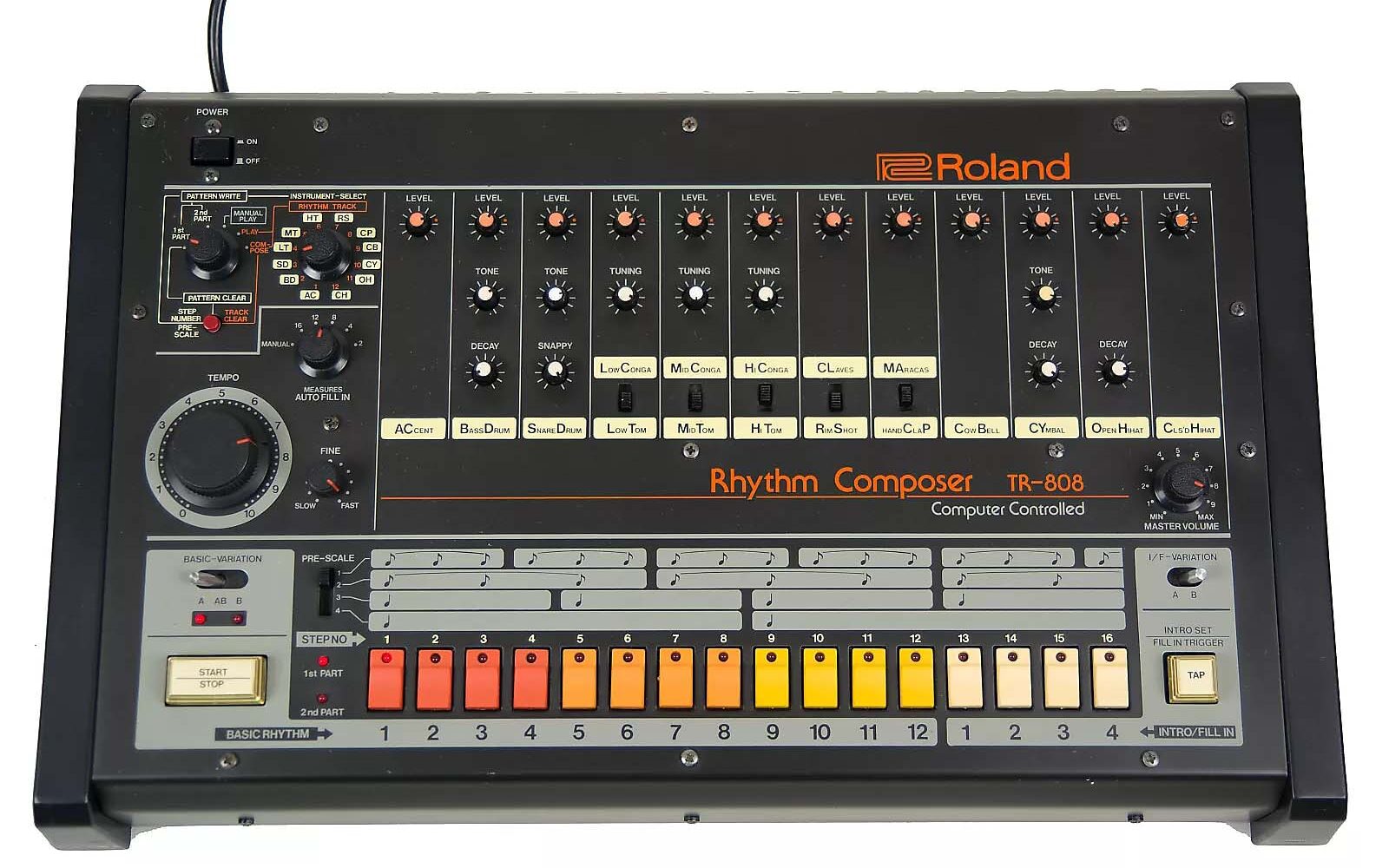
Today, the 808 can be heard on some of the most iconic songs in history, from Whitney Houston's "I Wanna Dance With Somebody" to Talking Heads' "Psycho Killer" to Jamie XX's "Gosh", and although it's not talked about much anymore, it remains one of the favorite instruments of some of the most important musicians on the scene today. In modern Hip-Hop, you hear the 808 everywhere too.
How was the Roland TR-808 originally developed, and what technical features characterise it?
Introduced by Roland Corporation in 1980, the Roland TR-808 was way ahead of its time. Unlike its predecessors, it did not use ready-made samples, but generated its sounds in an analogue manner - a method known as "subtractive synthesis". This created the distinctive, artificial-sounding sounds that we now consider iconic.
The TR-808's technical speciality was the use of transistors that deviated from the usual specifications. These small deviations resulted in unique sounds such as the powerful kick drums, crisp snares and futuristic hi-hats. It is interesting to note that the TR-808 was originally intended as an affordable alternative to expensive drum machines, but was met with little enthusiasm at launch due to its unusual sound. It wasn't until years later, when it became cheaper to buy on the second-hand market, that hip-hop and electronic artists discovered its potential and turned it into a cult object.
808 Basses: Examples
In modern hip-hop music production, the following sounds are known as 808:
These are two loops from my Moog 808 Sample Pack, which I recorded from my Moog Subsequent 37 synthesizer.
This is the typical bass sound used in modern trap music. It has the fast attack of the Tr-808, but then was modified to have a long sustain and release that is more reminiscent of a bass than a drum machine. Nowadays, 808 basses like this are created with synthesizers.
What is an 808? The meaning in Hip-Hop
One of the first popular songs to use the 808 was "Planet Rock" by Afrika Bambaataa, a seminal track in hip-hop culture that brought rap to dance floors in the 1980s.
According to a statement by Arthur Baker (producer of "Planet Rock") in a documentary about the instrument, "rappers hated it at first."
"They didn't know what to do with the beat. They had to go home and rewrite it, they couldn't rap over it because it really wasn't contemporary anymore, so they ended up rapping to the beat of the machine. Today everybody does that, but back then it was different," says the producer, citing Run-DMC's song "I Like It" as an example in which this theme can be heard in detail.
The 808 was a major influence for Rick Rubin, the famous producer of artists like Adele, Red Hot Chili Peppers and others, in his early work in the industry with T La Rock, Jazzy J and the Beastie Boys.
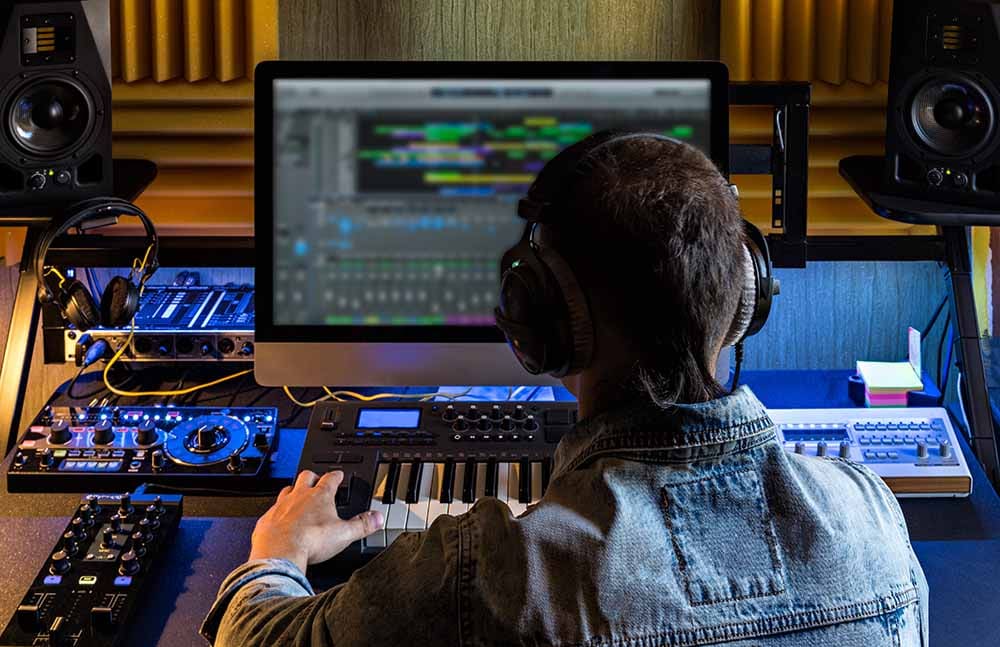
In the middle of the last decade, Kanye West dedicated an entire album to the device with 808s & Heartbreak, on which the songs were composed exclusively with the drum machine.
Meanwhile, 808 basses are used everywhere in modern hip hop, by producers like Young Mesh, Murdabeatz or Beatdemons.
808: Significance in electronic music
Planet Rock itself influenced people like Juan Atkins, the acknowledged pioneer of techno, who started playing techno in the hangars of Detroit, expanding the genre.
Thanks in part to the 808, New Order found a source of inspiration for one of the most iconic dance songs of the eighties: "Blue Monday". It also inspired its creator Kakehashi to invent the TR-909, the machine that would bring Chicago house beats to life.
In the nineties, Aphex Twin, one of the representatives of experimental electronica, also used it for several pieces, while in recent years it has been reinvented by producers like Jaime XX.
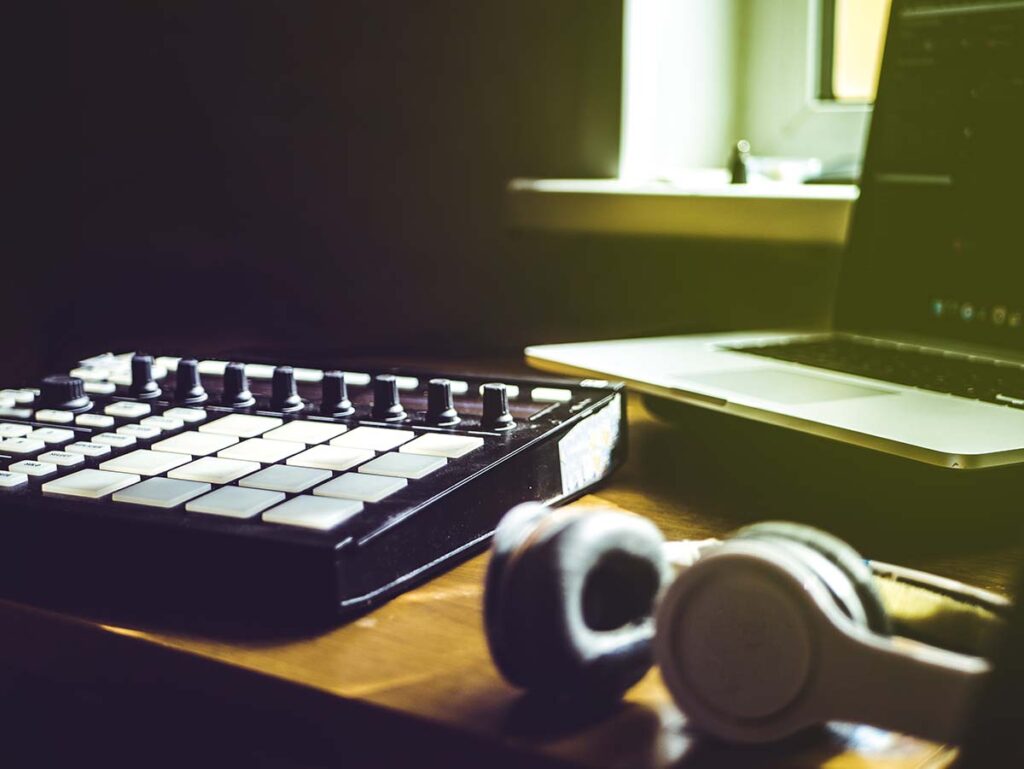
Also interesting: What is MIDI? A comprehensive overview of one of the most important inventions in music history
What modern alternatives or successors to the TR-808 are available for music producers today?
A lot has happened in the world of drum machines since the TR-808. Roland itself has set new standards with the TR-8S and the TR-08 modern versions have been released that combine both analog sounds and digital samples. For those looking for software solutions, the Roland Cloud offers a digital emulation of the TR-808 that can be used in any DAW.
But there are also alternatives from other manufacturers: Elektron Analog Rytm combines analog drum synthesis with sampling, while the Behringer RD-8 is an exact reproduction of the original TR-808 – and at an affordable price. Plug-ins such as Arturia Spark or D16 Nepheton also offer a convincing recreation of the 808 sound and can be seamlessly integrated into modern productions.
How to produce fat and massive 808 basses
808 Sub-Bass and the Sidechain Compression
Let's start by adding a sub bass to get that part of the 808 that resonates in your chest and makes it sound like you're sitting in front of a fan instead of speakers. Feel free to use either a sample for this, or a simple synth with 1 oscillator.
Add sidechain compression to work with the punch of the kick drum so that these two elements are not fighting for the same space in the spectrum.
The compressor should compress exactly when the kick hits. For this you need a fast attack. Release can then be adjusted as desired. This part is crucial for the sounds to fit together well, so take as much time as you need for this.

By loading the video, you accept YouTube's privacy policy.
Learn more
Attack time of the kick
Secondly, you need to use a kick drum that is crisp and has a short release time. No sub-bass frequencies so that it complements the 808 (the sub-bass) and together they create the "kick + punch in the chest" effect. It is important that the frequencies of the bass drum and the 808 sub-bass do not collide. Even if we have a sidechain in the sub, we get more cleanliness and power if they are not fighting for the same space.
The final touches
To give it a creative touch, you can add a synthesiser, remove all the frequencies that overlap with the two previous elements and add an effect (distortion, saturation, etc.). It is important that you also add the same sidechain that we put in the subbass, so that it seems to be the same sound.
This will give your 808 bass a more interesting and unique sound. A little distortion/saturation also helps to make the bass audible even on smaller speakers/phones.
More helpful tips
Tune the 808 to the key of your song
Since the 808 is just a sine wave, it has a fundamental frequency and can therefore be tuned. After you have selected your sample, you tune it to the root of the key of your song.
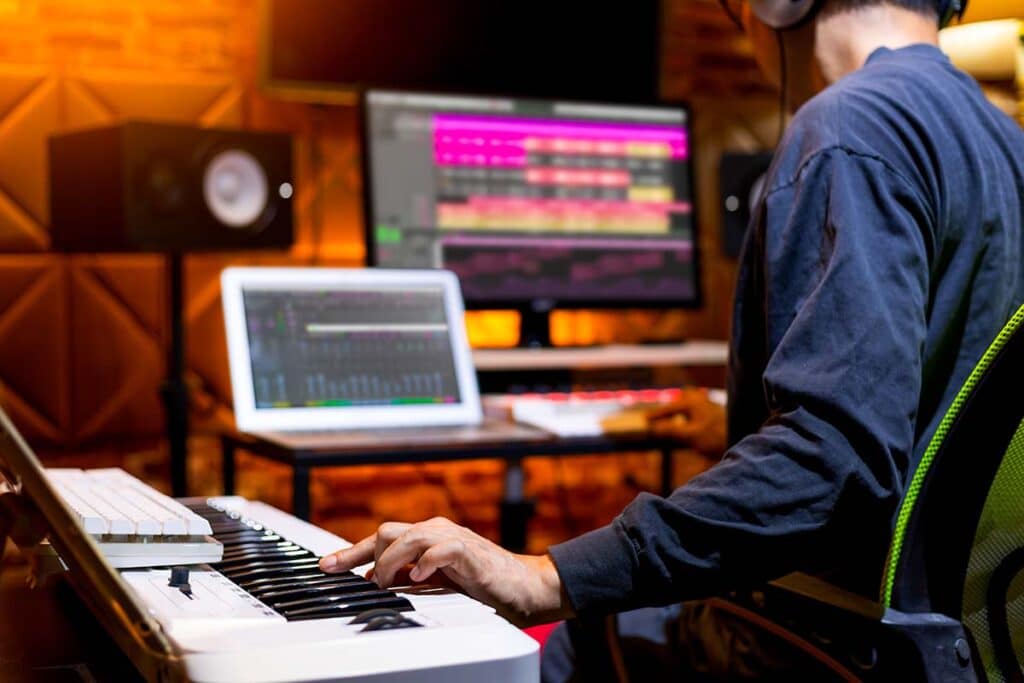
Ideally, you should tune it to the root of the key, but this is not always possible. Alternatively, try tuning the 808 sample to a fifth (seven semitones) above the key signature.
In any case, make sure that it harmonises with the other instruments in the track.
Optimise the timing
After you have set the right tuning, you need to make sure that the timing of your 808 is just as good. The length of an 808 sample has a big impact on the production. If a sample fades out too early or not fast enough, it can make the song seem unbalanced. Almost like it's stumbling.
Adjust your clips to make sure the 808 stops on the right beat. Some 808s should be short, others longer. Some should end on a downbeat, others on the backbeat. It all depends on the song.
Make the 808 loud!
One of the best ways to make your 808s pop is also one of the easiest: Just make them loud in the context of the mix.
Especially in hip-hop, kick+bass like the 808 are often the loudest instruments in a mix. Instead of processing an 808 with half a dozen signal processors, just try to make it louder than the other instruments.
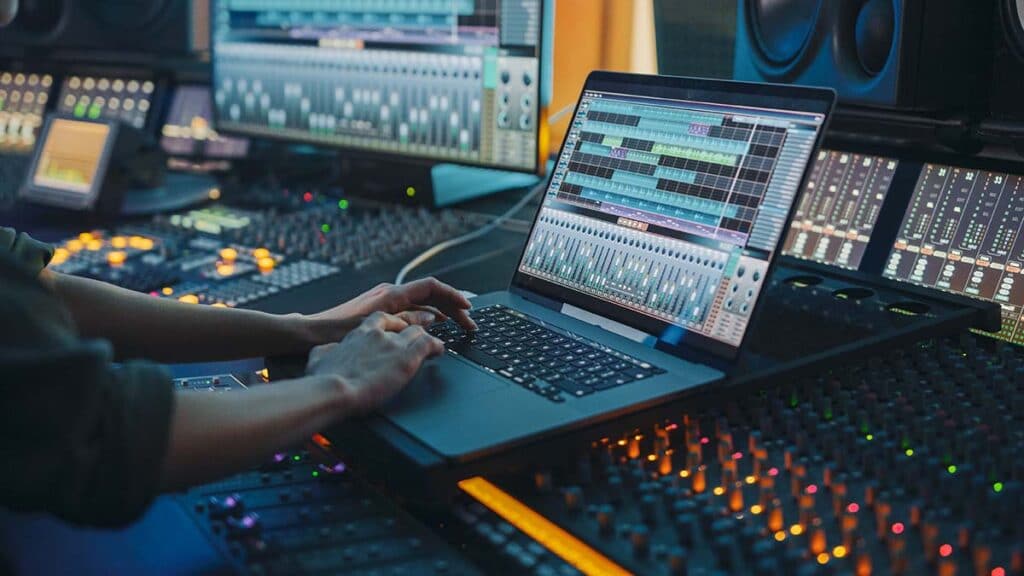
Start with all the controls at the bottom. Bring the 808 up to an appropriate level in your DAW (probably somewhere around -18 dBFS). Then bring in all the other instruments around it.
This way, you don't have to try to squeeze the 808 into an existing mix, but can make it the focal point from the beginning.
Overlay 808 samples
808 samples are all about big, sustained bass. For a punchier, firmer sound, you can combine your 808 with additional kick drum samples for more attack.
The sample of a bass drum has overtones that a bass doesn't, and these come through better in the mix. Try to find a good sample with a lot of attack that goes well with your 808. Avoid kicks with a big, bvoomy bass. You may even need to add a high-pass EQ to the kick sample to avoid muddying the mix.
Just make sure you don't cause any phase problems with the new kick sample. Listen to the 808 and the kick both separately and together and make sure you don't lose any low notes when switching between the two.
Process the 808 low-mids with the EQ
Now that you have loaded your samples, it's time to process the signal.
Start by boosting the bass with a transparent, bass-emphasising EQ. Raise the bass around the fundamental frequency of the song, usually around 40 Hz or so.
Then take your favourite parametric EQ and slightly cut the low mids around 250 Hz to remove any dirt. You may also need to make a small, narrow cut in the low frequencies to make room for other instruments like kick and bass.
With a pure 808 sample, there is not much information to work with in the high frequency range. But if you use a modified sample, you might be able to get some colour and character out of it with a high shelf (around 8 kHz).
Process the transients with a compressor
The tight, punchy sound of an 808 comes from the initial transients. Use a compressor with a slow attack and fast release time to increase the snap of the sample if necessary. You don't need a lot of compression, just enough to support the initial transients.
Simply route the kick channel to an aux send. Assign the new aux send as the key input for the compressor. Then simply adjust the compressor controls so that the level of the 808 drops quickly each time the kick or bass kicks in. This way you make room for the 808 in the mix and separate the instruments from each other.
Multiband compression can also be a very useful tool to keep instruments in your mix. Put the 808 and the kick drum on a bus and add a multiband compressor. Adjust the controls to keep the bass better and the treble more prominent.
How does the use of 808 sounds influence the listener's perception of a song?
The deep, powerful 808 kick drums and rhythmic hi-hats have an emotional effect as well as a sonic one. The sub-frequencies of the 808 kick are physically palpable, creating a kind of "wave" in the body that adds an exhilarating energy to the music. This makes the 808 ideal for genres such as trap, hip-hop and EDM that emphasise groove and bass intensity.
In addition, the distinctive 808 sound has acquired a cultural significance. Many listeners associate it with certain musical styles or even social movements. A song with 808 sounds is often perceived as modern, energetic and urban. This sonic signature is so strong that its use alone can make a song sound "contemporary" - even if other elements are kept minimal.





